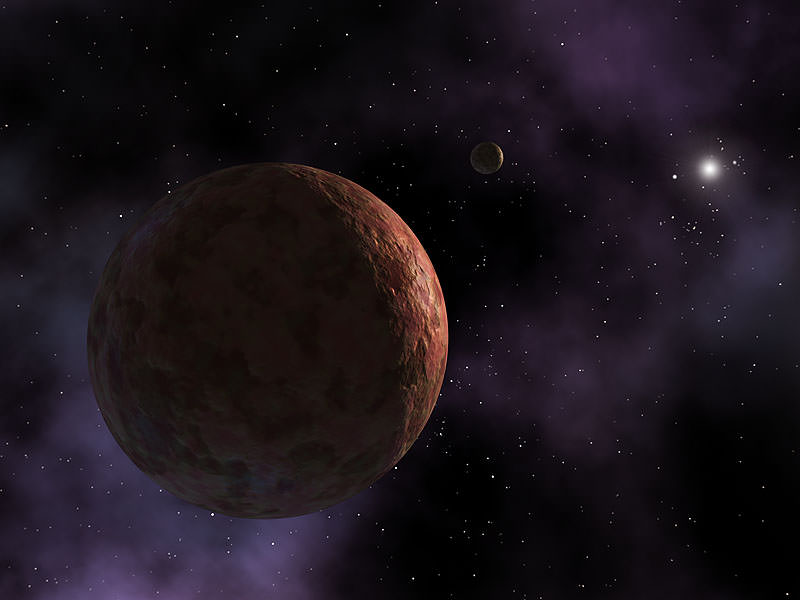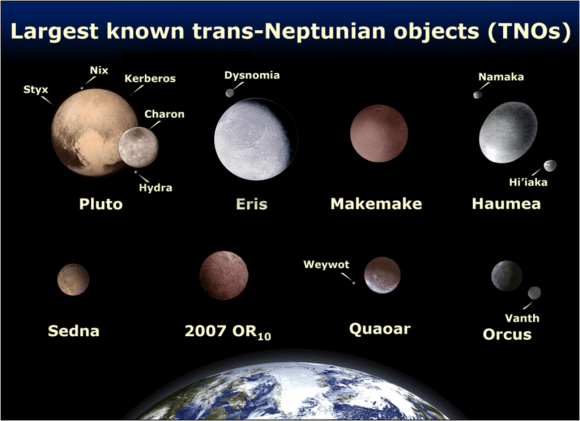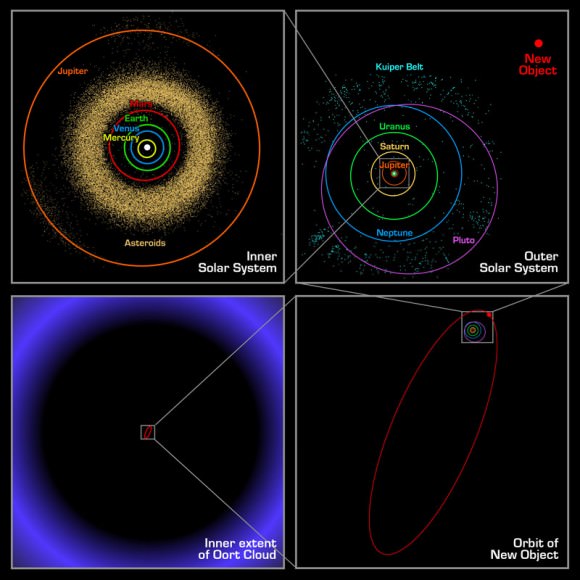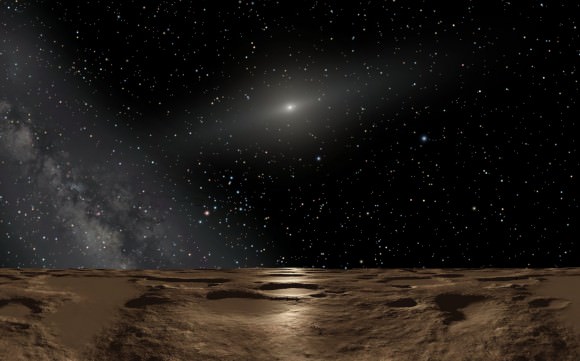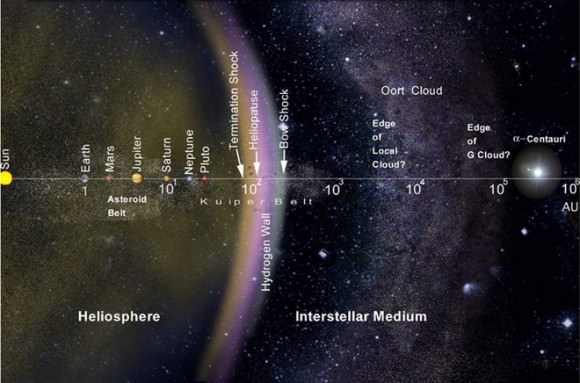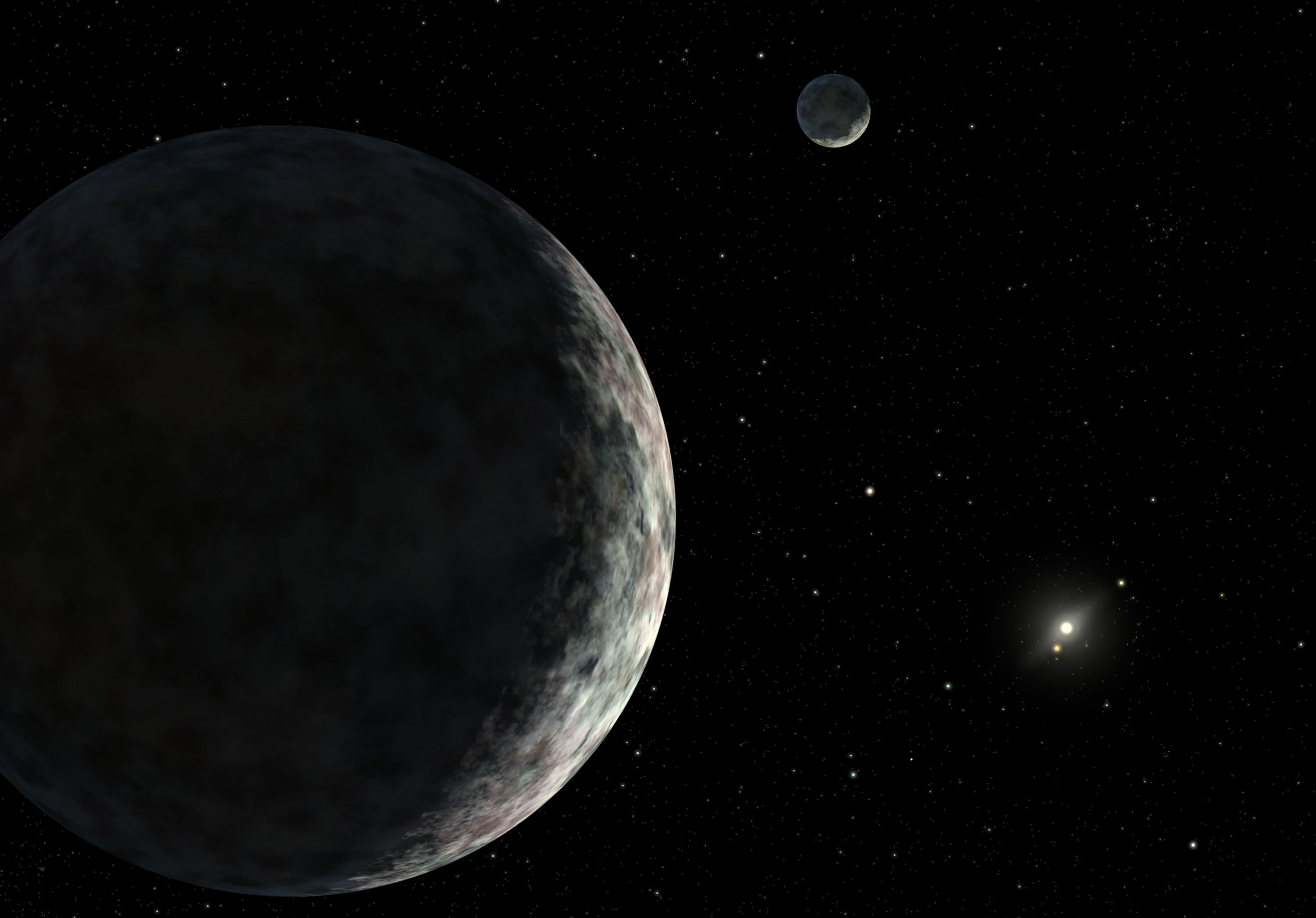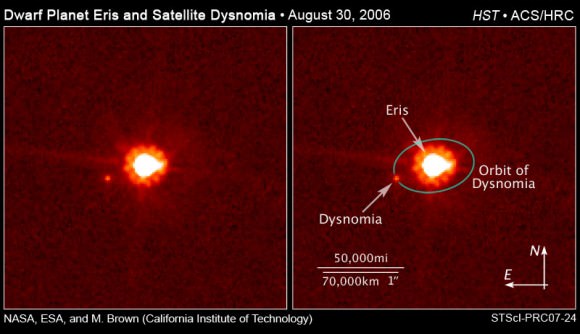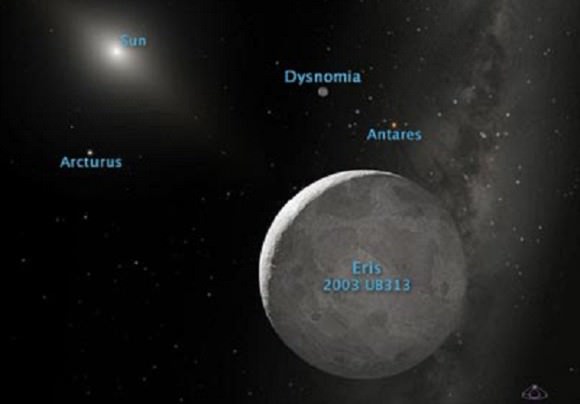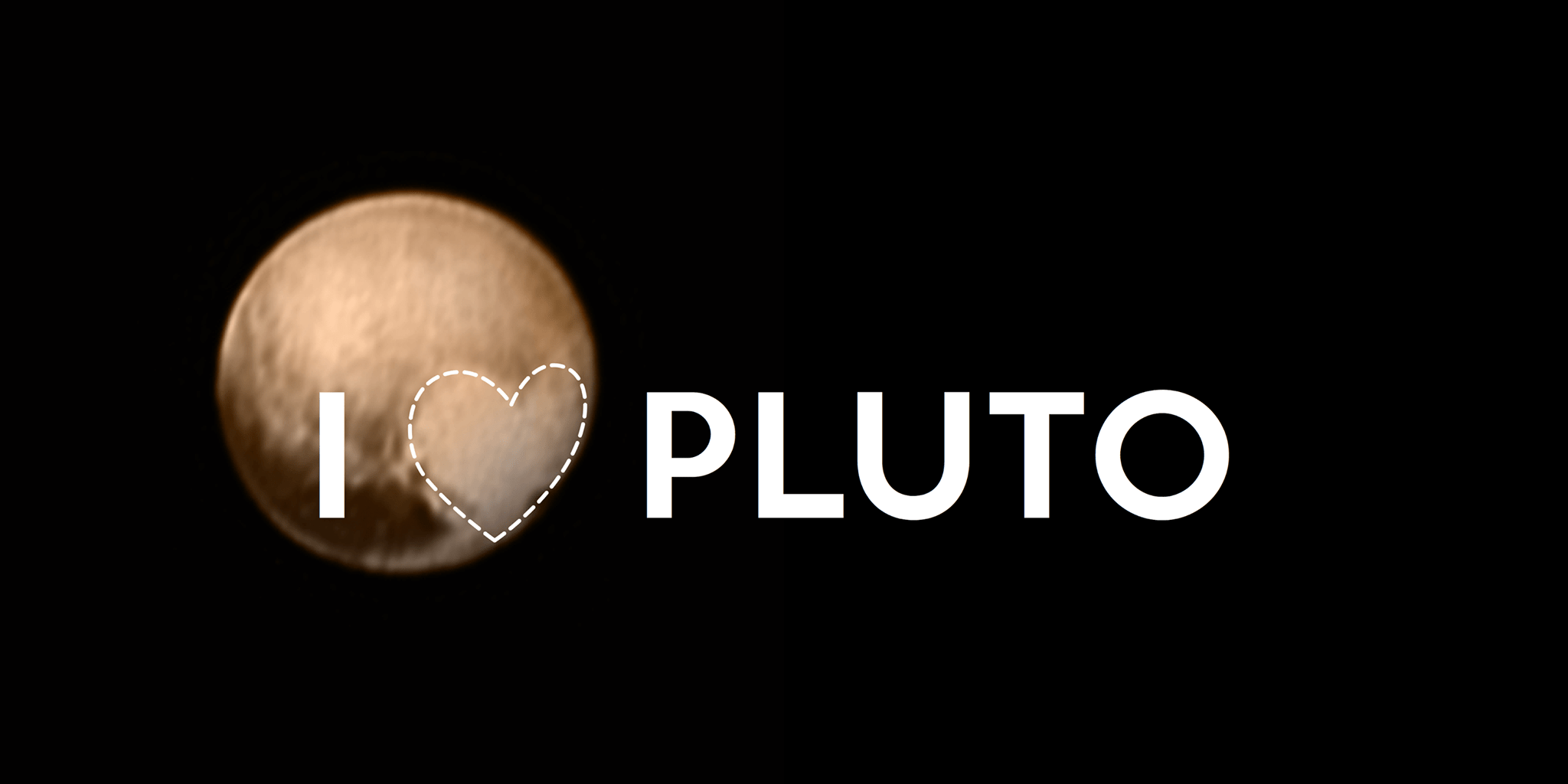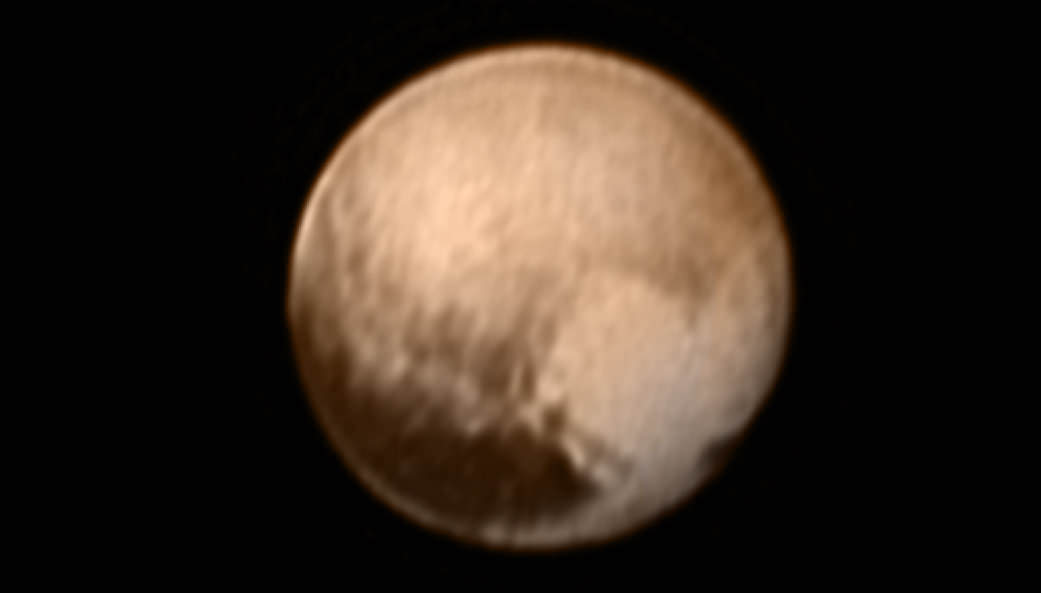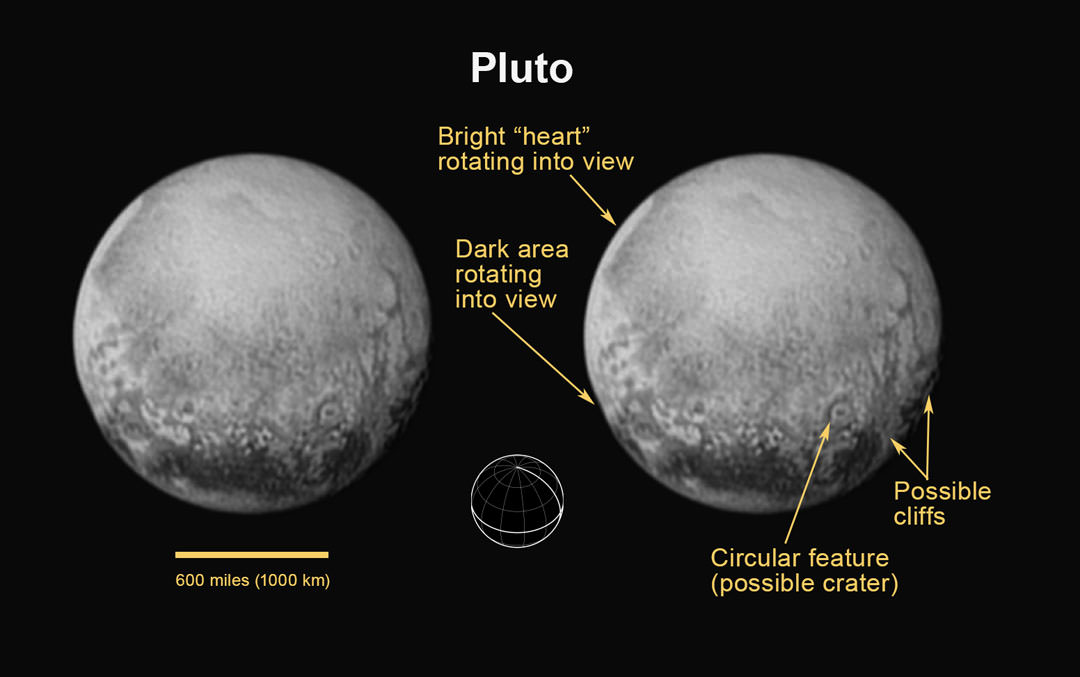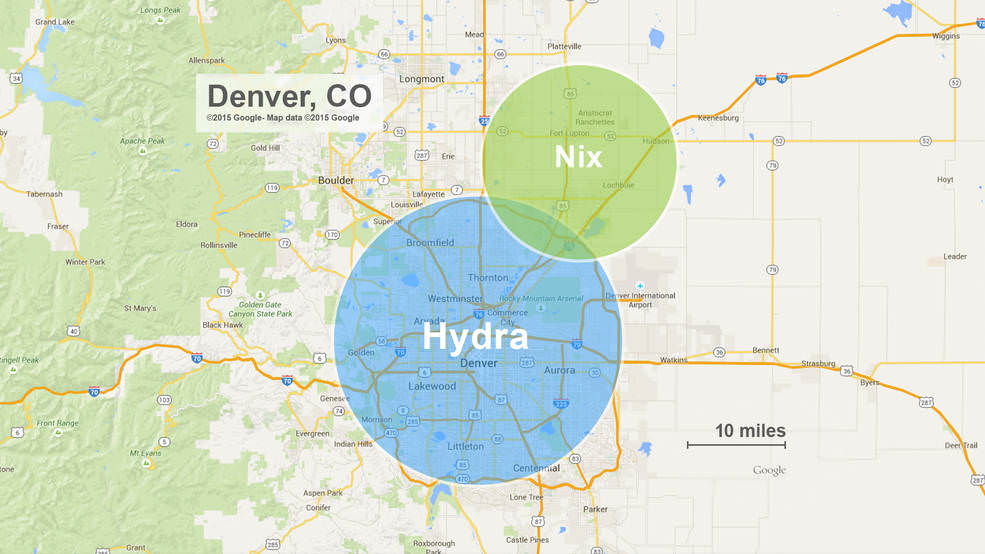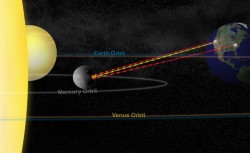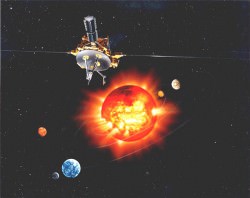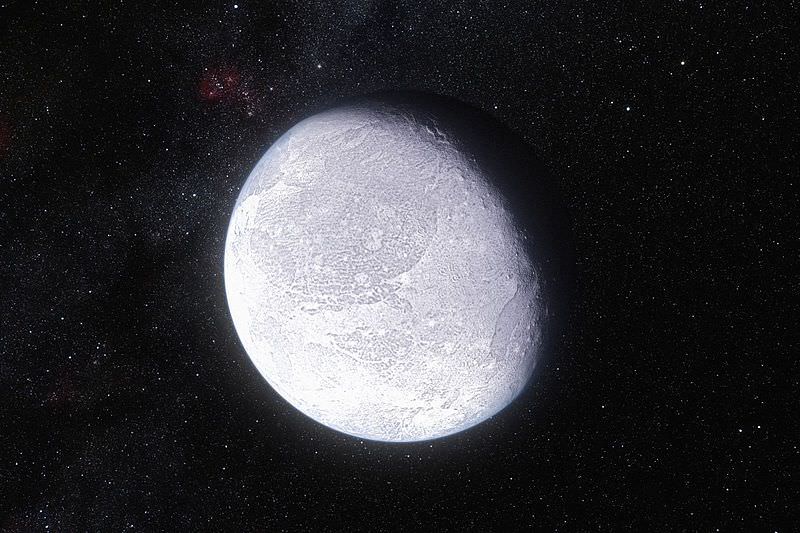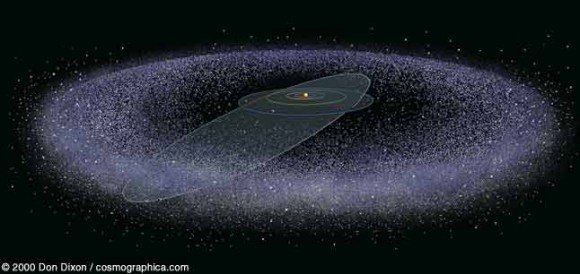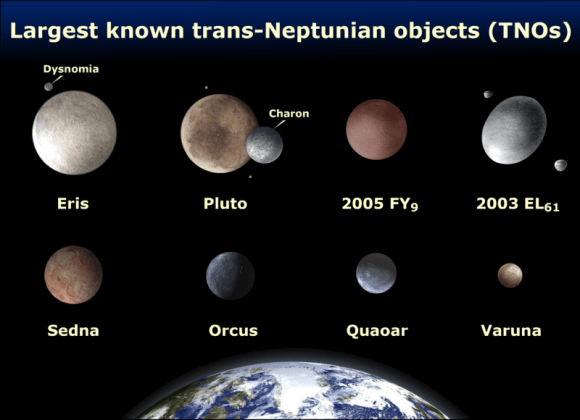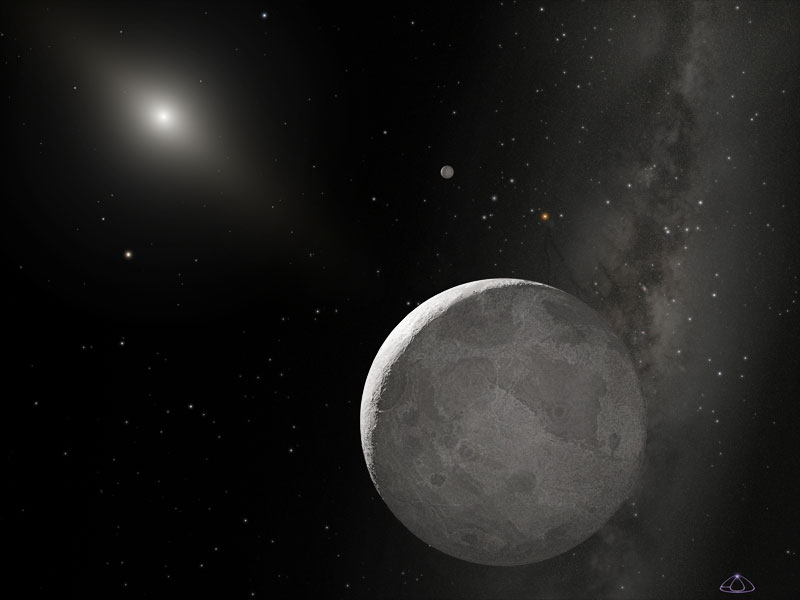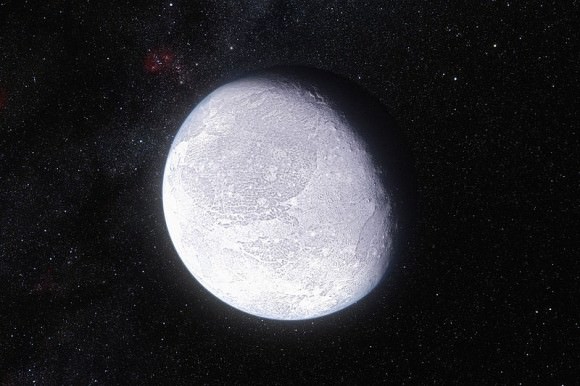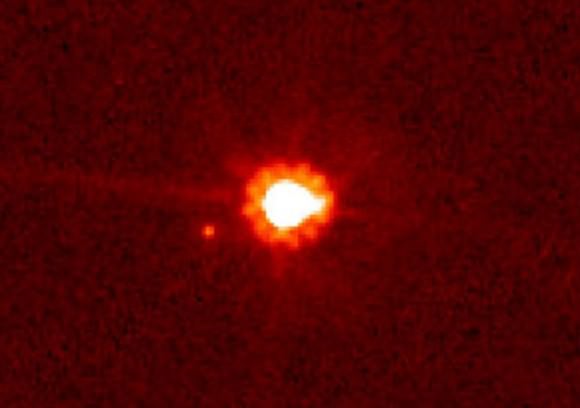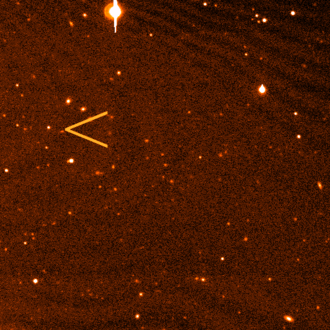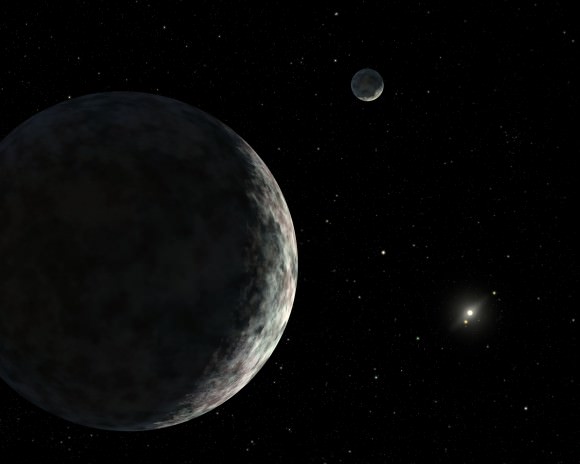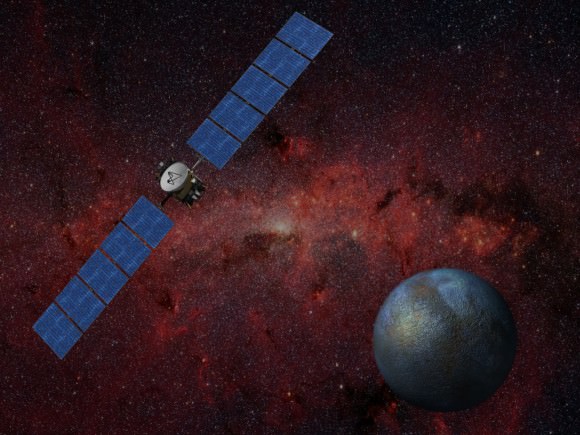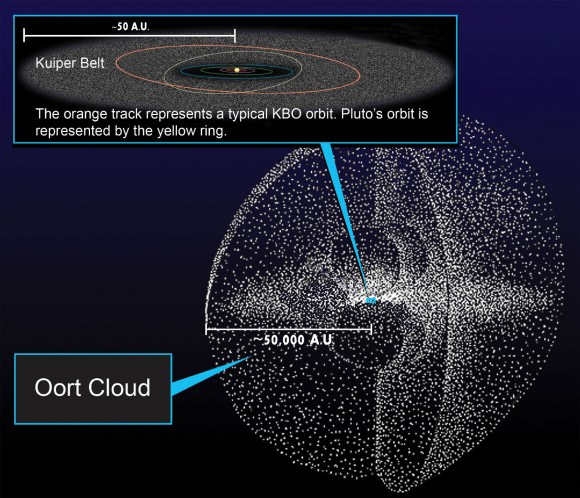In 2003, astronomer Mike Brown and his team from Caltech began a discovery process which would change the way we think of our Solar System. Initially, it was the discovery of a body with a comparable mass to Pluto (Eris) that challenged the definition of the word “planet”. But in the months and years that followed, more discoveries would be made that further underlined the need for a new system of classification.
This included the discovery of Haumea, Orcus and Salacia in 2004, and Makemake in 2005. Like many other Trans-Neptunian Objects (TNOs) and Kuiper Belt Objects (KBOs) discovered in the past decade, this planet’s status is the subject of some debate. However, the IAU was quick to designate it as the fourth dwarf planet in our Solar System, and the third “Plutoid“.
Discovery and Naming:
Makemake was discovered on March 31st, 2005, at the Palomar Observatory by a team consisting of Mike Brown, Chad Trujillo and David Rainowitz. The discovery was announced to the public on July 29th, 2005, coincident with the announcement of the discovery of Eris. Originally, Brown and his team had been intent on waiting for further confirmation, but chose to proceed after a different team in Spain announced the discovery of Haumea on July 27th.
The provisional designation of 2005 FY9 was given to Makemake when the discovery was first made public. Before that, the discovery team used the codename “Easterbunny” for the object, because it was observed shortly after Easter. In July of 2008, in accordance with IAU rules for classical Kuiper Belt Objects, 2005 FY9 was given the name of a creator deity.

In order to preserve the object’s connection with Easter, the object was given a name derived from the mythos of the Rapa Nui (the native people of Easter Island) to whom Makemake is the creator God. It was officially classified as a dwarf planet and a plutoid by the International Astronomical Union (IAU) on July 19th, 2008.
Size, Mass and Orbit:
Based on infrared observations conducted by Brown and his team using the Spitzer Space Telescope, which were compared to similar observations made by the Herschel Space Telescope, an estimated diameter of 1,360 – 1,480 km was made. Subsequent observations made during the 2011 stellar occulation by Makemake produced estimated dimensions of 1502 ± 45 × 1430 ± 9 km.
Estimates of its mass place it in the vicinity of 4 x 10²¹ kg (4,000,000,000 trillion kg), which is the equivalent of 0.00067 Earths. This makes Makemake the third largest known Trans-Neptunian Object (TNOs) – smaller than Pluto and Eris, and slightly larger than Haumea.
Makemake has a slightly eccentric orbit (of 0.159), which ranges from 38.590 AU (5.76 billion km/3.58 billion mi) at perihelion to 52.840 AU ( 7.94 billion km or 4.934 billion miles) at aphelion. It has an orbital period of 309.09 Earth years, and takes about 7.77 Earth hours to complete a single sidereal rotation. This means that a single day on Makemake is less than 8 hours and a single year last as long as 112,897 days.

As a classical Kuiper Belt Object, Makemake’s orbit lies far enough from Neptune to remain stable over the age of the Solar System. Unlike plutinos, which can cross Neptune’s orbit, classical KBOs are free from Neptune’s perturbation. Such objects have relatively low eccentricities (below 0.2) and orbit the Sun in much the same way the planets do. Makemake, however, is a member of the “dynamically hot” class of classical KBOs, meaning that it has a high inclination compared to others in its population.
Composition and Surface:
With an estimated mean density of 1.4–3.2 g/cm³, Makemake is believed to be differentiated between an icy surface and a rocky core. Like Pluto and Eris, the surface ice is believed to be composed largely of frozen methane (CH4) and ethane (C2H6). Though evidence exists for traces of nitrogen ice as well, it is nowhere near as prevalent as with Pluto or Triton.
Javier Licandro and his colleagues at the Instituto de Astrofisica de Canarias performed examinations of Makemake using the William Herschel Telescope and Telescopio Nazionale Galileo. According to their findings, Makemake has a very bright surface (with a surface albedo of 0.81) which means it closely resembles that of Pluto.
In essence, it appears reddish in color (significantly more so than Eris), which also indicates strong concentrations of tholins in the surface ice. This is consistent with the presence of methane ice, which would have turned red due to exposure to solar radiation over time.
Atmosphere:
During it’s 2011 occultation with an 18th-magnitutde star, Makemake abruptly blocked all of its light. These results showed that Makemake lacks a substantial atmosphere, which contradicted earlier assumptions about it having an atmosphere comparable to that of Pluto. However, the presence of methane and possibly nitrogen suggests that Makemake could have a transient atmosphere similar to that of Pluto when it reaches perihelion.

Essentially, when Makemake is closest to the Sun, nitrogen and other ices would sublimate, forming a tenuous atmosphere composed of nitrogen gas and hydrocarbons. The existence of an atmosphere would also provide a natural explanation for the nitrogen depletion, which could have been lost over time through the process of atmospheric escape.
Moon:
In April of 2016, observations using the Hubble Space Telescope‘s Wide Field Camera 3 revealed that Makemake had a natural satellite – which was designated S/2015 (136472) 1 (nicknamed MK 2 by the discovery team). It is estimated to be 175 km (110 mi) km in diameter and has a semi-major axis at least 21,000 km (13,000 mi) from Makemake.
Exploration:
Currently, no missions have been planned to the Kuiper Belt for the purpose of conducting a survey of Makemake. However, it has been calculated that – based on a launch date of August 21st, 2024, and August 24th, 2036 – a flyby mission to Makemake could take just over 16 years, using a Jupiter gravity assist. On either occasion, Makemake would be approximately 52 AU from the Sun when the spacecraft arrives.
Makemake is now the fourth designated dwarf planet in the solar system, and the third Plutoid. In the coming years, it is likely to be joined several more objects in the Trans-Neptunian region that are similar in size, mass, and orbit. And assuming we mount a flyby to the region, we may discover many similar objects, and learn a great deal more about this one.
We have many interesting articles on Makemake and the Kuiper Belt here at Universe Today. Here’s How Many Planets are in the Solar System, and Makemake’s Mysterious Atmosphere.
Sources:






